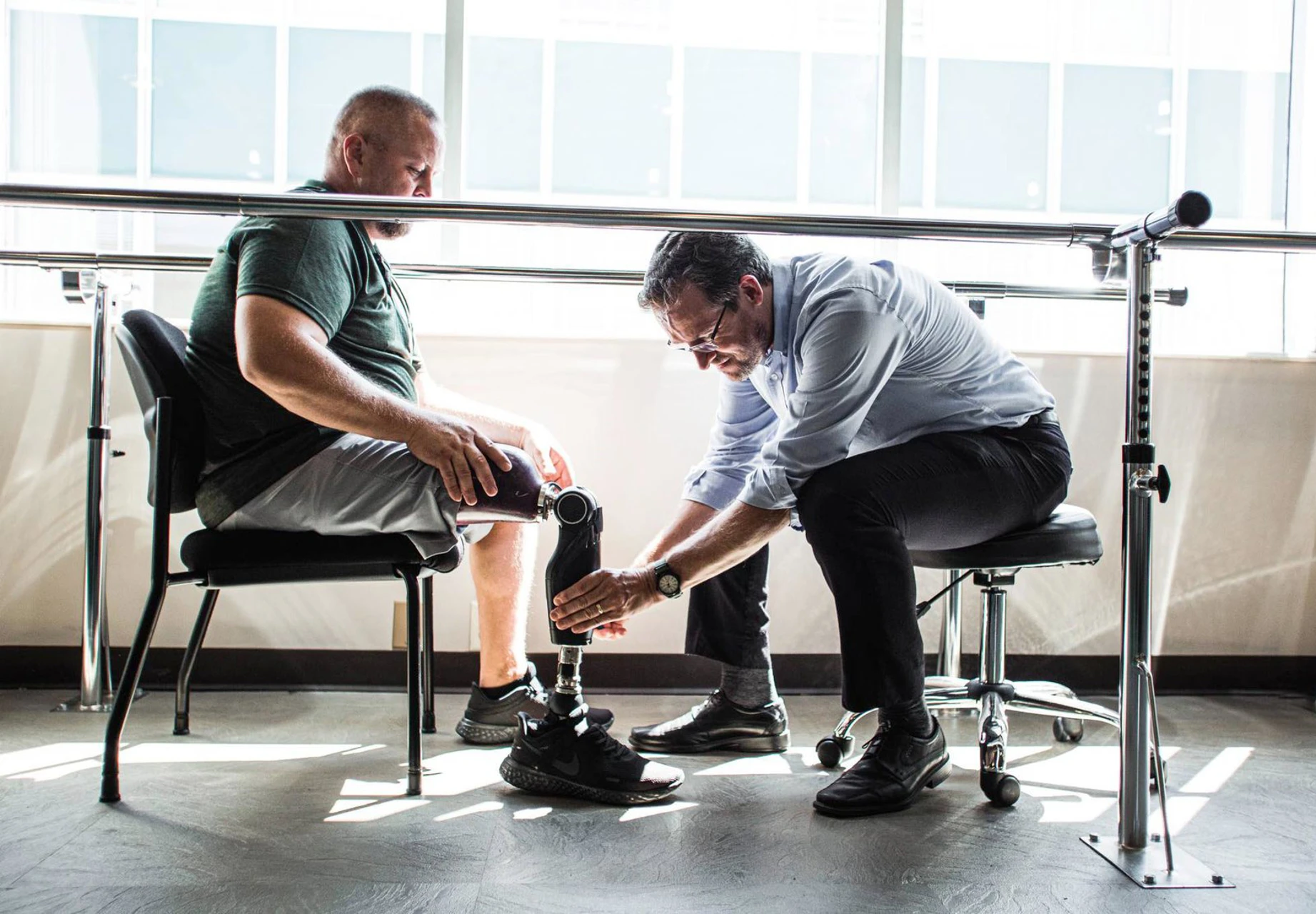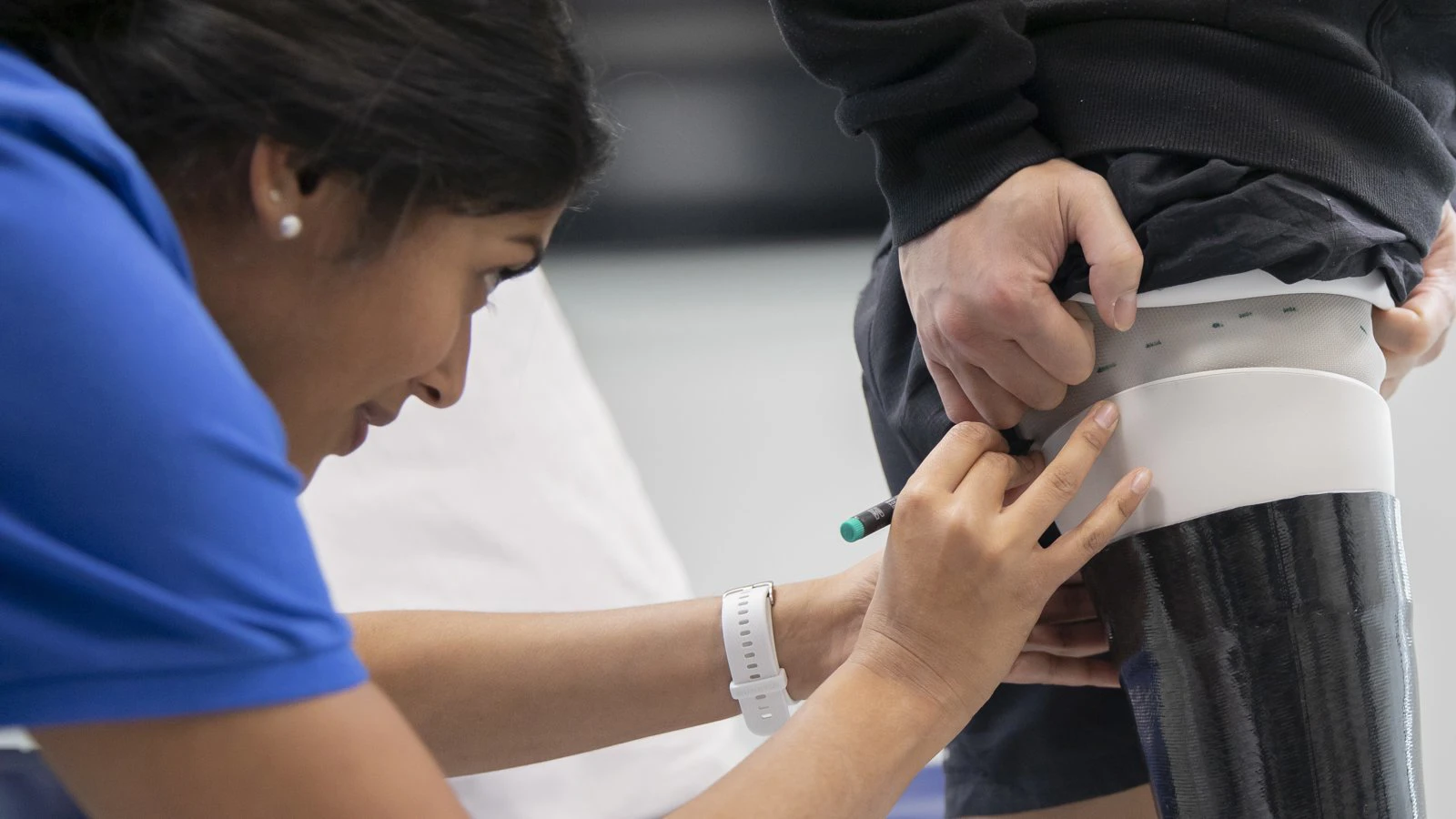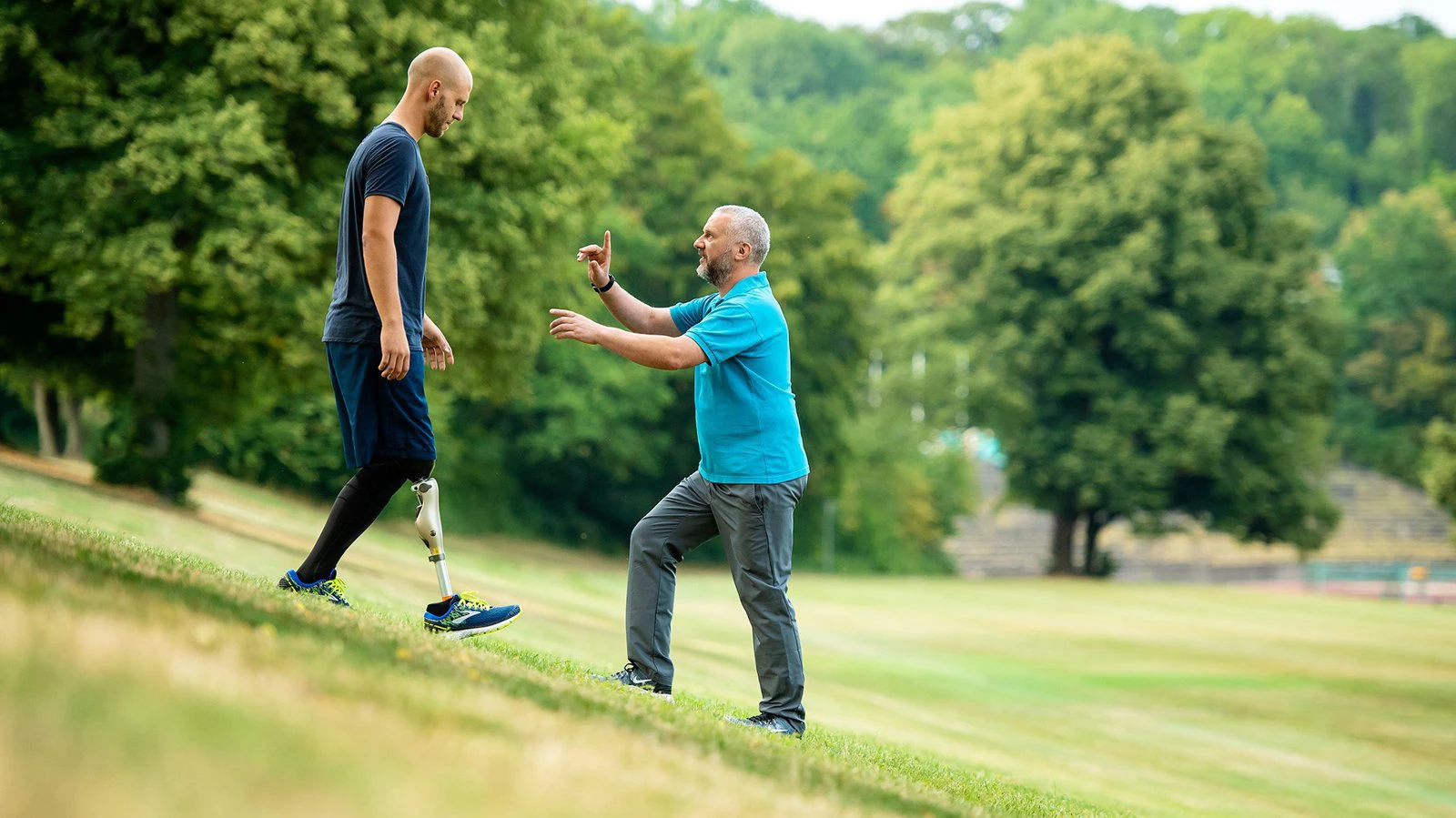Welcome To Amputee Care Center
powered by Spronken

Making an arm prosthesis or leg prosthesis is a complex process that requires a high-tech orthopaedic workshop, a team of qualified and experienced prosthetists and prosthesis builders. Making an arm prosthesis or leg prosthesis something that obviously needs to be done very precisely, but where innovation and personal attention are also very important.
At Amputee Care Center (ACC by Spronken), we have more than 60 years of experience and take this process to the next level at our prosthetic centre in Genk, Belgium. To do so, we use high-tech solutions such as 3D printing, but also pride ourselves on our unique package of total care for amputees.
Whether you need a leg prosthesis, arm prosthesis or sports prosthesis, we always start with a free, no-obligation introductory meeting at our prosthetics centre. During this meeting, we discuss your needs and your lifestyle. This allows us to assess your options and how we can best help you.
Moreover, we not only look at how we can make the best prosthesis for you, but also how our multidisciplinary team can best serve you. You will find not only the best prosthetists in our prosthesis centre, but also physiotherapists and psychologists, for example. We also specialise in caring for children with an amputation or congenital defect. Care for amputees goes much further than just a good prosthesis, especially in children. We try to get a complete picture of your or your child's unique physical and emotional situation during the introductory meeting.
It is essential during this ‘intake’ that we get a good look at your stump, as every stump is different. We use advanced scanning technologies to create a three-dimensional image of the stump. This becomes the basis of the final prosthesis. It is important to note that whenever possible, we always advise you to contact us before your amputation takes place. This way, we can already prepare you for what is to come and help you optimally regain as much functionality as possible after the amputation.
Besides the ‘technical’ analysis, we also discuss your personal goals together. For example, do you want to be able to play sports again, do you have a specific job or are there daily needs you want to be able to continue doing? This all helps later in designing a prosthesis that is not only functional, but also comfortable and enriches your quality of life.
Contact us by completing the Contact Form or by calling +32 (0)470 500 888. We are at your service.
After the introductory meeting and your agreement, we start designing your prosthesis. We use state-of-the-art software at ACC to create a digital blueprint. Each prosthesis is thus custom-made by us. Using CAD software, we then create a digital model of the prosthesis. We adapt this model to the specific anatomy of each amputee.
Choosing the right materials is also crucial at this stage. For the prosthetic socket, the part that makes direct contact with the stump, we often choose flexible, durable materials, such as polyurethane or silicone. For the frame of the prosthesis, lighter materials such as titanium or carbon fibre are usually used.

One of the innovations we are most proud of at Amputee Care Center is our 3D printing technology, which we do in our own lab. Thanks to this technology, we have tremendous possibilities in terms of customisation and precision.
We convert the digital print of the amputated limb into a format that can be read by the 3D printer. At Amputee Care Center, we use professional 3D printers made specifically for this purpose. Thus, we design prosthetic sockets with more precision, giving the socket a better fit. We also work with high-quality materials, such as carbon, which are suitable for sockets for long-term and intensive use.
3D printing of a prosthetic socket is completed within a day in many cases, depending on how complex the design is. The 3D printer builds the socket layer by layer, creating a very precise final product. Thanks to this method, we can replicate even the smallest details of the stump. So you can be sure of a perfect fit. This technique also allows us to give the prosthesis a unique look with a design of your choice. This gives more confidence and self-assurance when wearing the prosthesis. For example, we turn children into heroes with a prosthesis with a print of their favourite superhero and Ricardo went out with a smile thanks to his ‘Whisky’ prosthesis.
After making the socket, we get to work on carefully reworking and finishing the prosthetic socket. This includes smoothing the surfaces, removing excess material and checking for any flaws. At Amputee Care Center, we apply strict quality control to ensure that the prosthesis meets our technical, ISO-13485 approved, standards.
Once the prosthetic socket is ready, we assemble it with other components of the prosthesis. Here you can think of the connecting elements, the frame and, when needed, a prosthetic knee, a dynamic foot prosthesis, hand prosthesis or other functional component.
At Amputee Care Center, we also work with highly advanced prostheses equipped with sensors and microprocessors, such as the well-known Hero arm from Open Bionics. We call these types of prostheses bionic prostheses. These prostheses allow very precise and natural movements. For example, bionic arms and myo-electric arm prostheses use muscle signals from the stump. This makes it possible, for example, to move prosthetic fingers separately from each other. Another good example of advanced leg prostheses is the MCK-electronic knee, which provides a natural and fluid walking experience for people with an upper leg amputation. Read more about this in our article: what is a bionic prosthesis?
During assembly at our prosthetic workshop in Genk, Belgium, adjustments are made to the prosthesis to ensure it fits your body perfectly. Think from adjusting the fit to fine-tuning movements.

Fitting a first or new prosthesis is a crucial step and can also have a big emotional impact. At Amputee Care Center, we therefore take extensive time for this, to make sure the prosthesis is comfortable and functions properly, but also make you feel comfortable with the idea of wearing it.
During the trial fitting, we confirm and test the prosthesis. We encourage you to perform different movements, such as walking, sitting or specific actions such as holding a spoon. We are there for you to then address any discomfort or problems immediately. Based on feedback during the fitting, we make further adjustments to the prosthesis.
Fitting a prosthesis is only one part of the entire rehabilitation project in case of an amputation or congenital defect. At Amputee Care Center, we pay a lot of attention to training and aftercare, so that amputees can use their new prosthesis to its full potential.
Under the guidance of specialised physiotherapists, amputees learn how to use their prosthesis correctly. Together, you work on exercises for balance, coordination and strength.
At Amputee Care Center, we offer long-term support to amputees, both physically and emotionally. This includes free annual denture check-ups and maintenance. We solve any problems with the prosthesis so quickly and can make adjustments when needed.
Innovations in 3D printing technology have given us many more options for customisation in recent years and allow us to make prostheses more functional. However, at Amputee Care Center, we continue to invest in new technologies and methods to continuously improve our care for amputees. With more than 60 years of experience in our family-run business, a team of dedicated prosthetists and prosthetists, advanced techniques and personal attention, we are proud to call ourselves a leading player in prosthetic care. Not for nothing do amputees from all over Europe come to our prosthesis centre in Genk (Belgium) for the best tailor-made care.
Our goal is not just to provide a physical solution for amputees, but to improve the quality of life of people with an amputation. We want to see everyone walk out with a smile again and make sure the prosthesis is an enrichment of your life. Thanks to our expertise and personal approach, we make sure your prosthesis fits your needs perfectly and supports you in achieving your goals.
Are you interested in the possibilities of a prosthesis for yourself or your child and want to know more about our unique care at Amputee Care Center? Then contact us for a free, no-obligation introductory consultation. You can also come to us for a free second opinion for the optimal prosthesis. At ACC, we are at your service for all your questions, advice and are happy to work with you to put together a tailor-made programme.
Contact us by completing the Contact Form or by calling +32 (0)470 500 888. We are at your service.